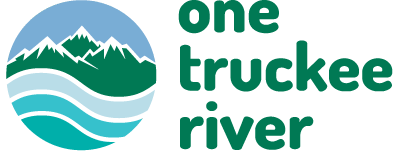Truckee River Watershed: Chalk Creek
Sitting up in Northwest Reno is Chalk Creek -- one of multiple tributaries trickling down from Peavine Mountain and the surrounding hills into the Truckee River. Prior to urbanization in the area, Chalk Creek flowed only in response to storm events. Once residential and commercial buildings began to appear, the lower parts of Chalk Creek began to flow year-round.
Prior to urbanization in the area, Chalk Creek flowed only in response to storm events. Once residential and commercial buildings began to appear, the lower parts of Chalk Creek began to flow year-round. The creek flows alongside many parks and walking trails in Northwest Reno; along Robb Drive, past McQueen High School, through residential neighborhoods, by Rainbow Ridge Park and through a valley, under I-80 and then under 4th Street (west of McCarran Blvd.) before it enters the Truckee River.Chalk Creek is a dryer creek, and a lot of wildlife is drawn in by the water.Some of the common wildlife found along this creek are coyote, jack rabbit, cottontail, marmot, raccoon, striped skunk, ground squirrel and chipmunk. Birds include red-tailed hawk, American kestrel, raven, and black-billed magpie. Closer to wetland areas might be Canada goose, mallard, American coot and northern shoveler, to name a few.
The creek flows alongside many parks and walking trails in Northwest Reno; along Robb Drive, past McQueen High School, through residential neighborhoods, by Rainbow Ridge Park and through a valley, under I-80 and then under 4th Street (west of McCarran Blvd.) before it enters the Truckee River.Chalk Creek is a dryer creek, and a lot of wildlife is drawn in by the water.Some of the common wildlife found along this creek are coyote, jack rabbit, cottontail, marmot, raccoon, striped skunk, ground squirrel and chipmunk. Birds include red-tailed hawk, American kestrel, raven, and black-billed magpie. Closer to wetland areas might be Canada goose, mallard, American coot and northern shoveler, to name a few. In the upper watershed, vegetation includes willow, wood rose, cottonwood. and service berry. Adjacent meadows are filled with grasses such as crested wheat, tall wheat, and bluebench wheat.
In the upper watershed, vegetation includes willow, wood rose, cottonwood. and service berry. Adjacent meadows are filled with grasses such as crested wheat, tall wheat, and bluebench wheat. According to the City of Reno's Truckee River Watershed map, Chalk Creek (and Mogul Creek) sits "on a unique geologic formation named the 'Hunter Creek Sandstone Formation,' which contains very high amounts of salts in the soil. Historically these creeks were dry most of the year, with water flowing only in response to rain or snow."Over the years, with population growth, new construction, paved roads and irrigation, the creeks are now flowing year-round! The increase in water moving into the ground through our lawns, parks and golf courses leaches the salts out as well. What does this mean? Chalk Creek (and Mogul Creek to the west) now contain very high amounts of Total Dissolved Solids (TDS), a pollutant to the Truckee River."Have you seen crusty salts at the edge of the water? This is TDS, popping out with water seeps in the creek canyons, deposited near the water's edge. TDS is bad for downstream wildlife, and bad for our drinking water."Below are some things you can do at home to cause less homemade pollutants in the Truckee River:
According to the City of Reno's Truckee River Watershed map, Chalk Creek (and Mogul Creek) sits "on a unique geologic formation named the 'Hunter Creek Sandstone Formation,' which contains very high amounts of salts in the soil. Historically these creeks were dry most of the year, with water flowing only in response to rain or snow."Over the years, with population growth, new construction, paved roads and irrigation, the creeks are now flowing year-round! The increase in water moving into the ground through our lawns, parks and golf courses leaches the salts out as well. What does this mean? Chalk Creek (and Mogul Creek to the west) now contain very high amounts of Total Dissolved Solids (TDS), a pollutant to the Truckee River."Have you seen crusty salts at the edge of the water? This is TDS, popping out with water seeps in the creek canyons, deposited near the water's edge. TDS is bad for downstream wildlife, and bad for our drinking water."Below are some things you can do at home to cause less homemade pollutants in the Truckee River:
- Consider using less water in your yard at home. That might include less grass and more shrubs on a drip watering system or making sure your sprinkler system is on a timer to avoid over-watering.
- Wash your car at a car wash instead of in your driveway. Commercial car washes recycle their water and filter it before it enters the local storm drains. Washing your car at home causes soap and other contaminants to end up in the gutter and then into our creeks and river.
- The less fertilizers used on your lawn, the better. Fertilizer is transported quite easily downstream thanks to clays. The fertilizer chemicals used in our lawns grows algae in the creeks and rivers downstream.
